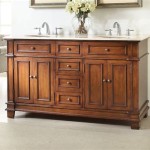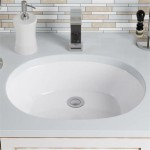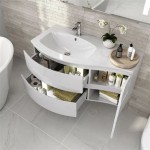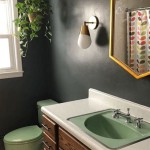How To Get Mold Off Painted Bathroom Walls
Mold growth on painted bathroom walls is a common household concern, primarily due to the consistently humid environment. Bathrooms, by their very nature, are exposed to elevated moisture levels generated by showering, bathing, and inadequate ventilation. This moisture, combined with organic materials present in dust, soap scum, and even paint itself, creates an ideal breeding ground for mold. Addressing mold promptly and effectively is crucial, not only for aesthetic reasons but also to prevent potential health issues and structural damage to the building.
The presence of mold can manifest in various forms, ranging from small, isolated spots to large, widespread colonies. Common types of mold found in bathrooms include mildew (often appearing as a flat, powdery growth) and more substantial mold species, which can be black, green, or brown. Identifying the type of mold isn't always necessary for basic cleaning, but if the mold problem is extensive or recurring, professional assessment and remediation might be required to determine the underlying cause and implement appropriate solutions.
Before initiating any mold removal process, prioritizing personal safety is paramount. Mold spores can trigger allergic reactions, respiratory problems, and other health issues in sensitive individuals. Proper ventilation is essential. Open windows and doors to ensure adequate airflow. Consider using a fan to circulate air and expedite the drying process after cleaning. Wearing personal protective equipment (PPE) is also highly recommended. This includes gloves (preferably rubber or nitrile), a respirator mask to prevent inhalation of spores, and eye protection (goggles or safety glasses) to shield against splashes.
Identifying Mold and Assessing the Problem
The initial step in eradicating mold is accurately identifying it. Mold typically appears as discolored patches or spots on the painted surface. These spots can range in color from white and gray to green, brown, or black. Distinguishing between mold and mildew is also important. Mildew generally appears as a flat, powdery growth on the surface and is often easier to remove. Mold, on the other hand, can penetrate deeper into the paint and even the underlying drywall, making it more challenging to eliminate.
Once identified, the extent of the mold growth should be carefully assessed. Small, isolated patches of mold can often be treated with DIY cleaning methods. However, large or widespread mold infestations, particularly those covering more than 10 square feet, may indicate a more serious underlying moisture problem and warrant professional mold remediation services. Additionally, if the mold is located in hard-to-reach areas, such as behind walls or under flooring, professional intervention is generally necessary to ensure complete removal and prevent recurrence.
Beyond visual inspection, consider the history of the bathroom. Has there been any recent water damage, such as leaks from pipes or the roof? Are there any signs of condensation forming on the walls or ceiling? A history of moisture problems increases the likelihood that the mold growth is more extensive than what is visible on the surface. Furthermore, a persistent musty odor, even in the absence of visible mold, can be a strong indicator of hidden mold growth.
Preparation and Cleaning Solutions
Before applying any cleaning solution, preparatory steps are crucial. Remove any loose items from the bathroom, such as toiletries, towels, and rugs. Cover any surfaces that you don't want to get wet, such as the floor or nearby fixtures, with plastic sheeting or drop cloths. This will help to protect these surfaces from potential damage or staining during the cleaning process. Ensure adequate ventilation by opening windows and doors, and continue wearing your personal protective equipment (gloves, mask, and eye protection).
Several cleaning solutions are effective for removing mold from painted bathroom walls. A diluted bleach solution is a common and effective option. Mix one part bleach with ten parts water. It's crucial to use a well-ventilated area when working with bleach and to avoid mixing it with other cleaning agents, especially ammonia, as this can create toxic fumes. Another option is a solution of white vinegar. Vinegar is a natural disinfectant and antifungal agent that can kill mold without the harsh chemicals of bleach. Undiluted white vinegar can be sprayed directly onto the moldy surface and allowed to sit for an hour before scrubbing and rinsing.
For those seeking a less harsh alternative, baking soda is another viable option. Create a paste of baking soda and water, apply it to the moldy areas, and let it sit for several minutes before scrubbing. Baking soda is a mild abrasive that can help to loosen mold and mildew without damaging the paint. Additionally, some commercial mold and mildew removers are specifically formulated for use on painted surfaces. Always follow the manufacturer's instructions carefully when using these products.
Cleaning and Prevention Techniques
Once the cleaning solution is chosen and the preparatory steps are complete, the actual cleaning process can begin. Using a soft-bristled brush or sponge, gently scrub the moldy areas. Avoid using abrasive scrubbers, as these can damage the paint and create microscopic scratches that provide a foothold for future mold growth. Apply the cleaning solution liberally, ensuring that all moldy areas are thoroughly saturated. Allow the solution to sit on the surface for a few minutes to allow it to penetrate and kill the mold spores.
After scrubbing, rinse the cleaned areas thoroughly with clean water. Use a sponge or cloth to wipe away any remaining residue from the cleaning solution. It's crucial to remove all traces of the cleaning agent to prevent discoloration or damage to the paint. Once rinsed, dry the walls completely. Use a clean towel or cloth to wipe away any excess water. You can also use a fan to circulate air and speed up the drying process. Ensuring that the walls are completely dry is essential to prevent mold from recurring.
Preventing future mold growth is as important as removing existing mold. The key to prevention is controlling moisture levels in the bathroom. Ensure adequate ventilation by running the exhaust fan during and after showers and baths. If the bathroom doesn't have an exhaust fan, consider installing one. Open a window whenever possible to allow fresh air to circulate. Wipe down wet surfaces, such as shower walls and mirrors, after each use to remove excess moisture. Fix any leaks promptly, whether from faucets, pipes, or the roof. Address any sources of condensation, such as poorly insulated pipes, by wrapping them with insulation.
Consider using paint specifically formulated for bathrooms. These paints often contain mildew-resistant additives that can help to inhibit mold growth. Regularly inspect the bathroom for signs of mold or mildew and address any problems promptly. By taking these preventative measures, you can significantly reduce the risk of mold growth on your painted bathroom walls and maintain a healthy and clean environment.
Maintaining cleanliness is also crucial. Regular cleaning of the bathroom, including wiping down walls and surfaces, removes organic matter that mold needs to thrive. Pay particular attention to areas prone to moisture accumulation, such as the corners of the shower and around the sink. Consider using a dehumidifier in the bathroom, especially during periods of high humidity, to further control moisture levels and prevent mold growth.
If the mold problem persists despite your best efforts, or if you suspect that the mold growth is more extensive than what is visible, it's essential to consult with a professional mold remediation specialist. They can assess the situation, identify the source of the moisture problem, and implement effective solutions to eliminate the mold and prevent it from recurring. Ignoring a persistent mold problem can lead to more significant structural damage and potential health risks.

How To Remove Mould From Painted Walls Mathiou Services

The Ultimate Guide On How To Clean And Get Rid Of Mold Pro Housekeepers

How To Remove Mould Before Painting Bella Bathrooms Blog

Bathroom Ceiling Mold Removal When To Clean Call Branch Environmental

Removing Mould From Walls How To Clean

How To Get Rid Of Mold In The Shower On Bathroom Walls Clorox

How Do You Get Rid Of Mould On Bathroom Walls Igloo Surfaces

How To Clean Mould Off Walls Very Effective And Safe Way Kill Prevent Express Co

How To Get Rid Of Mold In Bathroom 2024 Tips From Puroclean

How Do I Handle Mildew And Mold Before Repainting A Bathroom Burnett Painting Venice Fl
Related Posts







